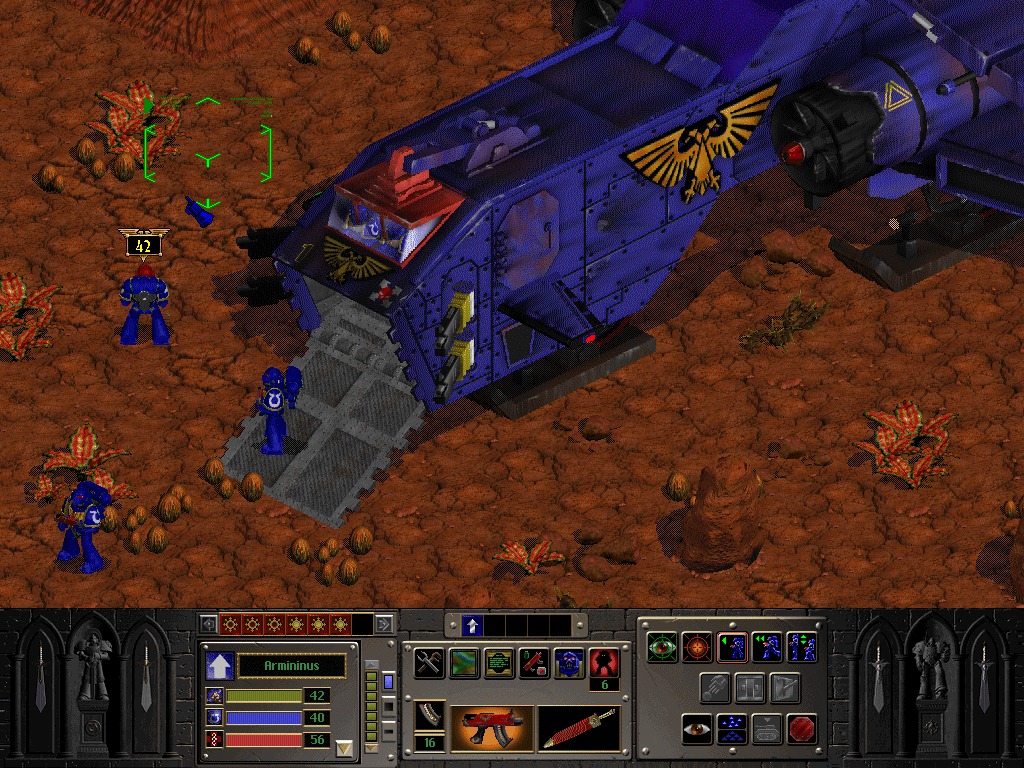Warhammer 40000 Wargear Torrent

Warhammer 40000 dawn of war. Legendary wargear and unlock. 12049.jpg Warhammer 40000 Dawn Of War II Chaos Rising-Razor1911 Torrent Free Download http. Download Warhammer.40.000.Dawn.of.War.II.Retribution.Complete-PROPHET torrent or any other torrent from Games >PC Direct download via magnet link.
Current Warhammer 40,000 logo Games Workshop & Citadel Years active 1987–present Players 2 or more Setup time 5–30 minutes Playing time Varies depending on the size of the game. Usually 1–6 hours. Random chance Medium () Skill(s) required, Website Warhammer 40,000 (informally known as Warhammer 40K, WH40K or simply 40K) is a tabletop produced by, set in a universe. Warhammer 40,000 was created by in 1987 as the futuristic companion to, sharing many game mechanics. Expansions for Warhammer 40,000 are released periodically which give rules for urban, planetary siege and large-scale combat.
The game is in its eighth edition, which was released on June 17, 2017. Players assemble and paint individual 28-millimetre (1.1 in) scale that represent futuristic, and. These figurines are collected to constitute squads in armies that can be pitted against those of other players. Each player brings a roughly equal complement of units to a tabletop battlefield with handmade or purchased terrain. The players then decide upon a scenario, ranging from simple skirmishes to complex battles involving defended objectives and reinforcements.
The models are physically moved around the table and the actual distance between models plays a role in the outcome of combat. Play is, with various outcomes determined by tables and the roll of dice. Battles may last anywhere from a half-hour to a whole weekend, and battles may be strung together to form campaigns. Many game and hobby stores host games, and official gaming events are held on a regular basis, such as the Throne of Skulls. Fastlane Millionaire Pdf here. Warhammer 40,000 's space fantasy is set in a fictional future during the. Its various factions and races include the, a decentralized yet totalitarian interstellar empire that has ruled the vast majority of humanity for millennia, the (similar to ), the (similar to Elves in Warhammer Fantasy Battle), and (very similar in both the Warhammer 40k and Warhammer Fantasy Battle universes), among others. The background and playing rules of each faction are covered in the game's rule books and supplemental army, along with articles in the magazines, and.
The game's miniatures are produced by and The Warhammer 40,000 setting is used for several tabletop games,, and works of fiction, including licensed works published by, a subsidiary of Games Workshop. Contents • • • • • • • • • • • • • • • • • • • • • • • • History [ ] In 1983, Games Workshop released a fantasy-themed wargame called, and it proved such a success that the company asked its designer,, to develop a science fiction version of it. Since before joining Games Workshop, Priestley had been privately working on a science fiction tabletop game called '. Priestley added Warhammer elements such as magic and science fiction counterparts to Elves and Orcs.
Warhammer 40,000: Rogue Trader was released in 1987. The first edition of the game was more of a roleplaying game focusing on small skirmishes, with an umpire overseeing the players. Priestley realized that players wanted a proper wargame rather than a roleplaying game, and in the second edition the umpire was removed and the players were allowed to deploy more warriors. Warhammer 40,000 became even more successful than its fantasy precursor, and soon Games Workshop released a range of spin-off games such as Necromunda, Battlefleet Gothic, and GorkaMorka. Influences [ ] Since childhood, Rick Priestley was an enthusiastic player of roleplaying games and miniature wargames. Particularly strong influences on Warhammer 40,000 were Battle! Practical Wargaming by Charles Grant and Laserburn by Bryan Ansell.
Priestley cites,,,, and as major influences on the setting. Priestley felt that Warhammer's concept of Chaos, as detailed by his colleague Bryan Ansell in the supplement Realms of Chaos, was too simplistic and too similar to the works of, so he developed it further, taking heavy inspiration from. The story of the Emperor's favored sons succumbing to the temptations of Chaos deliberately parallels the fall of Satan in Paradise Lost. The Imperium of Man is a critique of organized religion: To me the background to 40K was always intended to be ironic. [.] The fact that the Space Marines were lauded as heroes within Games Workshop always amused me, because they’re brutal, but they’re also completely self-deceiving. The whole idea of the Emperor is that you don’t know whether he’s alive or dead. The whole Imperium might be running on superstition.
There’s no guarantee that the Emperor is anything other than a corpse with a residual mental ability to direct spacecraft. It’s got some parallels with religious beliefs and principles, and I think a lot of that got missed and overwritten. Main article: The first edition of the game,, was published in 1987. Game designer created the original rules set (based on the contemporary ) alongside the Warhammer 40,000 gameworld. The game play of Rogue Trader was heavily oriented toward rather than strict wargaming. This original version came as a very detailed, though rather jumbled, rulebook, which made it most suitable for fighting small.